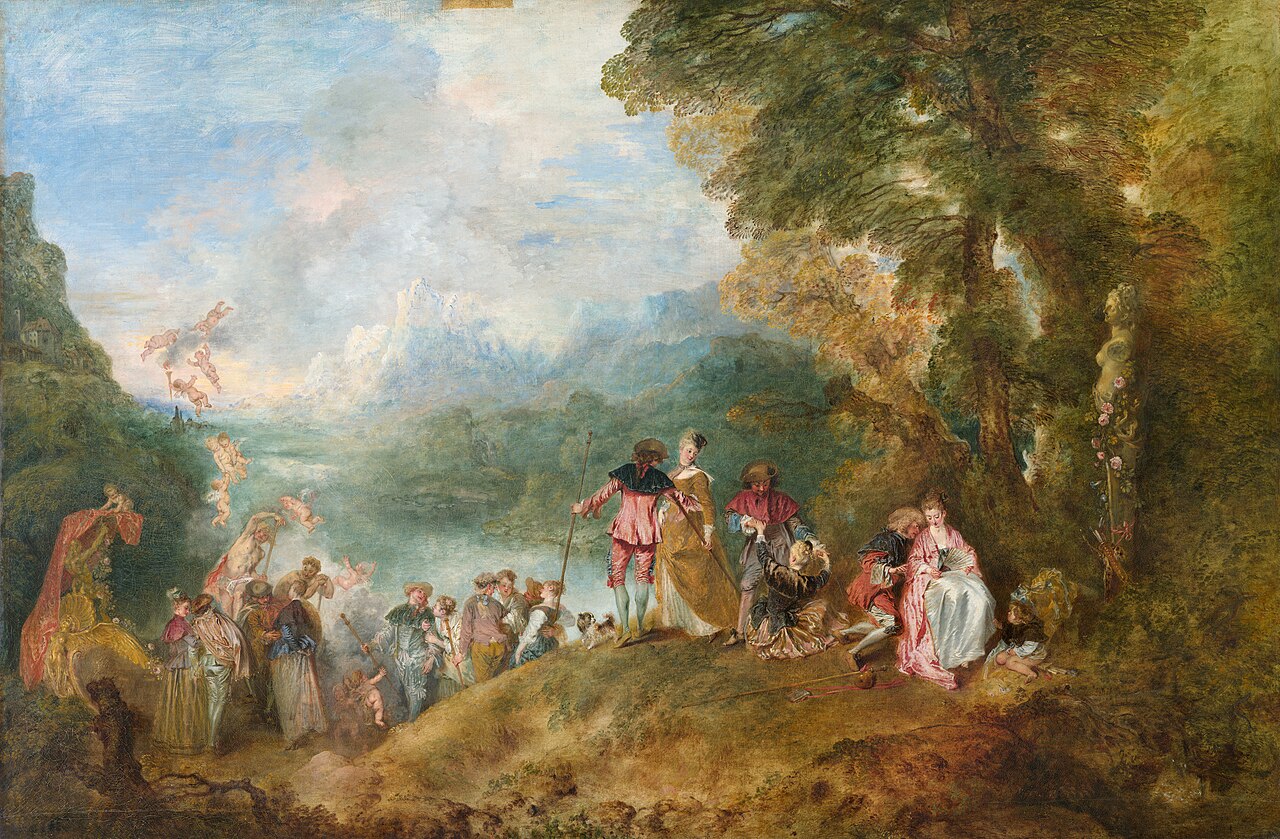
The three Vedutisti: Canaletto, Canaletto, and Guardi – And what is a veduta anyway?
I am currently plagued by a condition called „Wanderlust“. It is summer. It is warm enough at my place but there is a growing desire to see new places, to escape the daily life, to relax and forget the mundane and endless cycle of work, household chores, and rising early. It is not possible at the moment so I enjoy a vicarious satisfaction by looking at paintings of places I would love to see. Mainly Venice. I don’t know why Venice in particular. Maybe because it’s beautiful? Because it resonates with me? I don’t know. (And to be completely honest: Venice in pictures and paintings is superior to being at that place because it is incredibly crowded, even during off-seasons).
——————————————————————————————————————————————————————————————-
Books
This page includes affiliate links. If you click and purchase, I may receive a small commission at no extra cost to you.



——————————————————————————————————————————————————————————————-
Canaletto No 1
Again: I looked at paintings of Venice and found something confusing the other day. I was looking for Canalettos paitings (because Venice) and found, of course, Giovanni Antonio Canal, who was called Canaletto. He was a Venetian painter who lived and worked during the 18th century. He specialized in Cityscapes, so-called Vedutas as well as in Capricci and landscape paintings, mainly of his beloved Venice but when he moved to England for a while, he became quite famous for his views of English landscapes and cities as well. His style can be described as extremely precise and detail-oriented. It is a lot of fun to enlarge his paintings and look for tiny details, the documentation of daily life.



Canaletto No 2
Then I remembered that there was another painter, quite similar in style, who also painted cityscapes, mostly of Venice. His name was Bernardo Bellotto. But when you start to google „Bellotto“ you will inevitable find „Canaletto“ which seems very confusing. But to solve this little mystery: Bernardo Bellotto was Giovanni Antonio Canal’s nephew and a student in his uncle’s workshop. This was not unusual because being an artist was often a family business which spanned over generations. [1] Bellotto called himself “il Canaletto” as well.
It is quite difficult to tell the paintings of both Canalettos apart as their styles are very similar. Both were painstakingly detail-oriented and both liked to not only capture architecture of their city but daily life in tiny little and exciting details as well. Antonio Canals paintings are a bit lighter, a bit more cheerful and humorous, while Bernardo Bellottos pictures are a bit more dramatic with stronger contrasts in the lights and shadows.



139.1 cm x 236.9 cm, Getty Center, USA
Both made use of a new technology, the camera obscura. While the principle of the camera obscura itself was already known in ancient greece, the first portable camera obscura was constructed in 1686 and mostly used as drawing aid.
And to be honest: I am not able to tell them apart on the first glance. If you become familiar with their styles – yes. But when you know nothing about those paintings and painters? No chance. Or what do you think?
Francesco Guardi
To complete this article about Venetian vedudisti I want to mention Francesco Guardi. Francesco Guardi (5.10.1712 – 1.01.1793) was also Venetian painter who lived at the same time as the Canalettos and was a student of Canaletto the older as well. He was born into a family of painters: his father and his brothers were also painters. First he specialized in altar paintings but later, as a student of the famous Canaletto, he turned to Vedutas: highly detailed depictions of towns, cities, or landscapes. He followed the footsteps of his role model Canaletto and painted mainly scenes of his beloved Venice.
What makes him different from Canaletto is the fact that he veered off the exact depiction of the topography in favor of the pictorial effect, and even inventing details. His style is freer and more impulsive than that of his teacher. Guardi’s painterly style is known as “pittura di tocco” (of touch) for its small dotting and spirited brush-strokes.



But what are Vedutas and Capricci you may ask?
A Veduta is a highly detailed painting (or print) of a city- or a landscape. They first appeared in Flanders, a region in Belgium/the Netherlands. A painter called Paul Bril, who lived between the 16th and 17th century, was one of the first painters to embrace this new genre. In the 17th century it were mainly the Dutch painters who specialized in it, for example Johannes Vermeer with his excellent “View of Delft”. The flemish priest and etcher Lievin Cruyl contributed to the development of the veduta as some kind of souvenir of the “Grand Tour”, much like today when we bring home photographs of our journeys. Notable Vedutisti were both Canalettos, Gaspar van Wittel, or Hendrik Frans van Lint.

The Capriccio is something different. While the veduta is a close to real life depiction of a cityscape or a landscape, a “capriccio” (or “veduta di fantasia”) is an architectural fantasy.

[1] For example the Rettis, the Carloni (with far more artistic family members than stated in the list), or the Scottis. Often they also did not stick to only one art or craft but covered a whole range of different arts.




